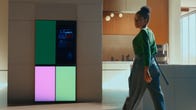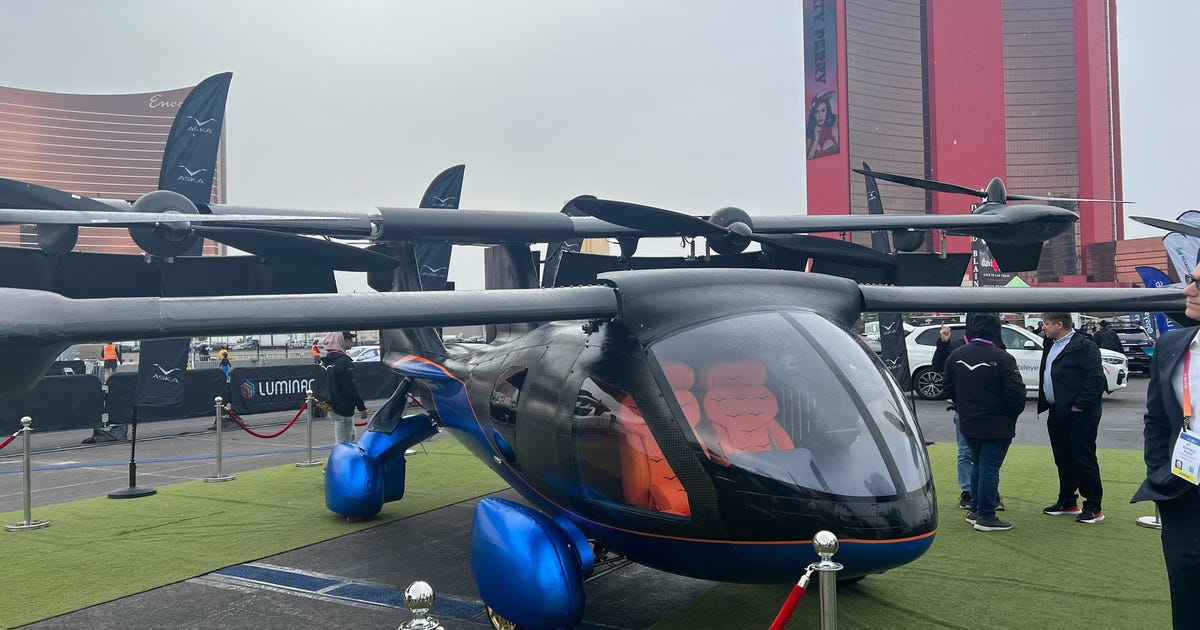
The future is bright, the future is flying — and maybe folding too. A flying car and an incredible shape-shifting screen were among our favorite highlights of CES 2023. The world’s biggest consumer electronics show is back and, for the first time since 2020, that means prowling an actual show floor in Las Vegas. CNET has been on the ground, sifting through the big reveals from companies like Samsung, LG, Intel, Nvidia, Razer and Dell. But the real stars may be the smaller, wackier products that push the envelope on what technology can really do.
CES returning to its prepandemic levels of intensity means there’s an enormous amount of tech to gawk at. There are electronics that’ll hit store shelves this year, gadgets that are a few years off and wild concepts that may never become a reality. There’s plenty of hype, but no shortage of truly promising tech to go along with it.
Consider this list your TL;DR. If you read only one CES recap, make it this one. (If you read two, check out our list of the biggest tech trends for 2023.)
A flying car is really happening
Bree Fowler/CNET
We’ve been waiting on flying cars since at least the Jetsons, and we now appear on the precipice of realizing that dream. And by “we” I mean a company called Aska, which revealed its A5 flying car at CES 2023. It’s more than a concept: Aska has opened preorders for the $789,000 vehicle. At CES 2023, Aska cofounder Guy Kaplinsky said Federal Aviation Administration approval for the A5 could happen “within a month.” Aska hopes to use the A5 to start a ride-sharing service in 2026.
Read more: This $789,000 Flying Car Could Get Off the Ground Faster Than You Think
Charge your laptop while you pedal
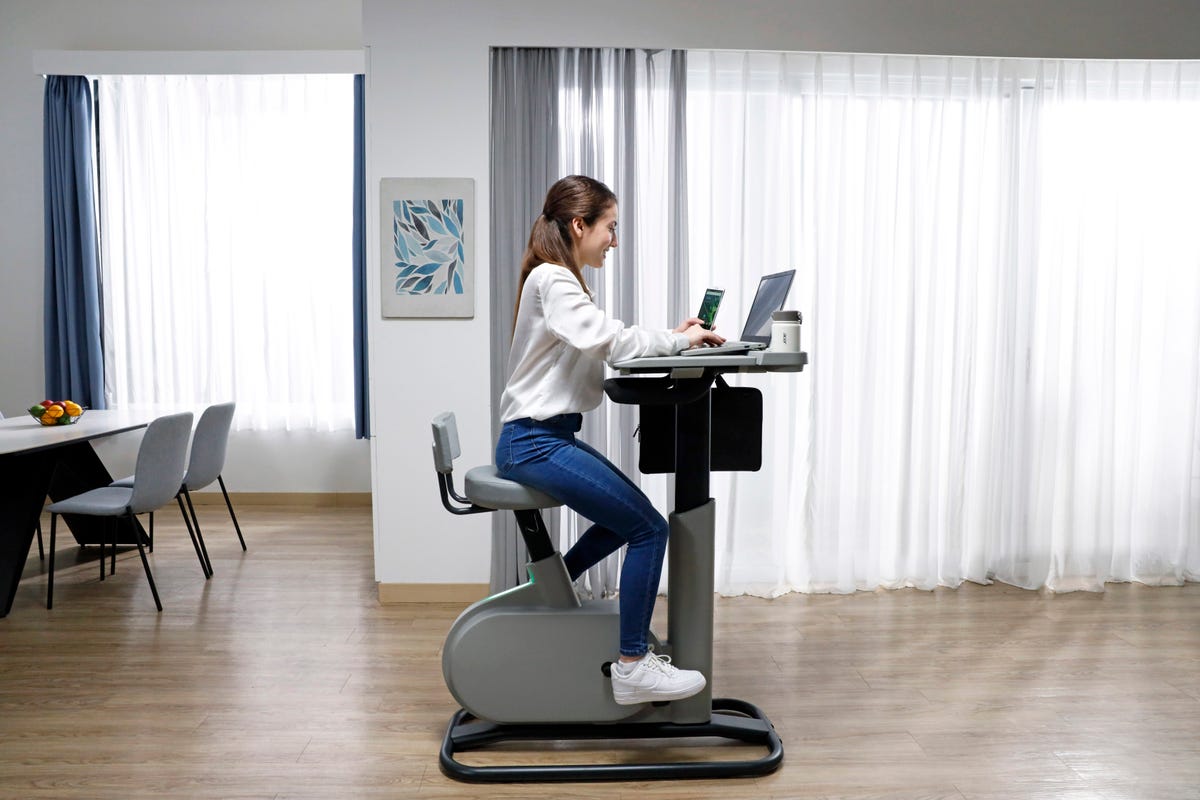
The eKinekt BD 3 bike desk is powered through energy created by your pedaling.
Acer
Treadmill desks are great, but the stationary bike desk is where the future of work-from-home calorie burning lies. Acer takes it a step further with its new desk-bike combo that also powers your devices as you go, making it the first bike desk of its kind to experiment with powering a whole workstation using kinetic energy. This gizmo is either an ingenious feat of multitasking or the unironic fruition of a Black Mirror episode.
Nothing but screens
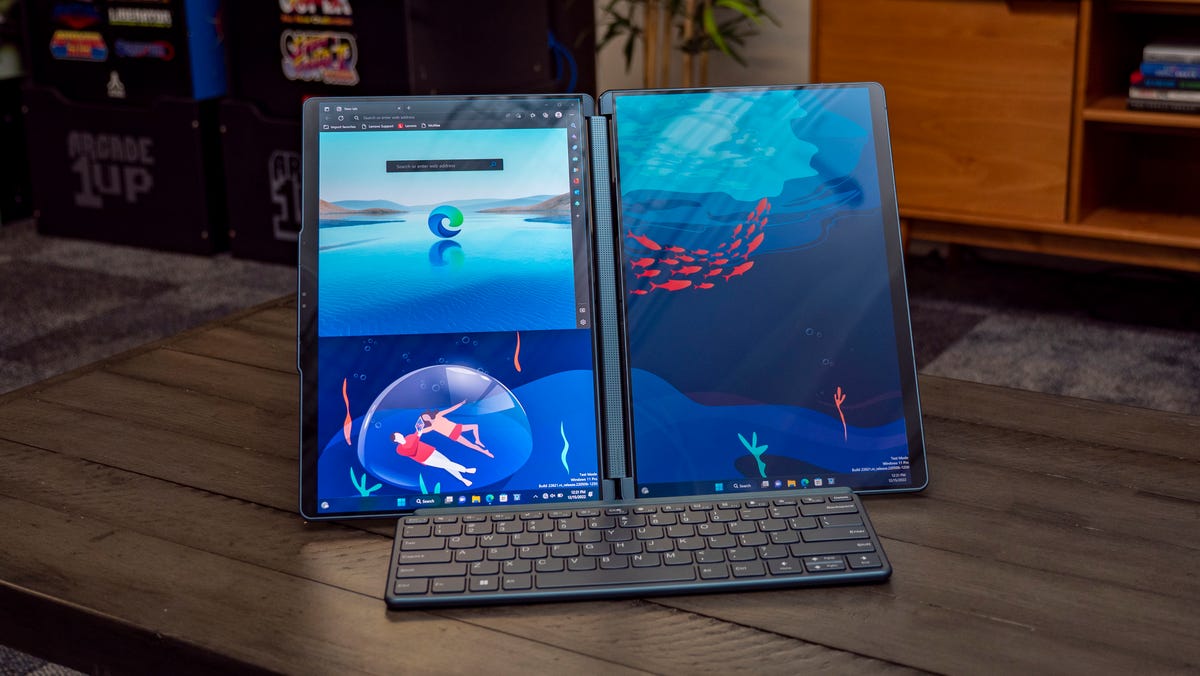
The Lenovo Yoga Book 9i in its horizontal position.
Josh Goldman/CNET
Lenovo’s Yoga Book 9i is a triumph of screen real estate. Featuring two screens and multiple configuration options (stacked vertically or side-by-side with the Bluetooth keyboard, turning one screen into its own haptic keyboard or touchpad, etc.), the shapeshifting laptop also comes with its own origami-style stand and active pen for taking full advantage of the dual displays.
Read more: Best Gaming Laptops From CES 2023 So Far
Move over, Switch and Steam Deck
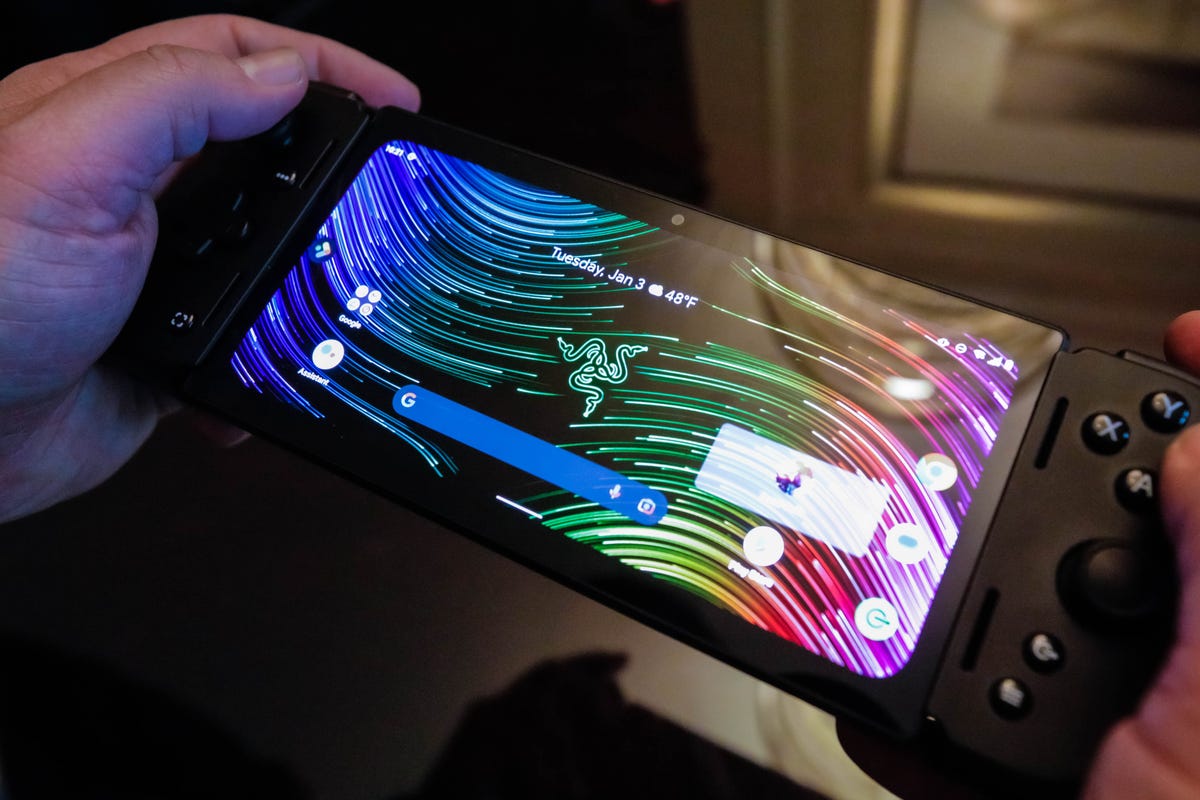
The Razer Edge is finally happening.
James Martin/CNET
There’s a new handheld gaming device in town. Coming Jan. 26, the long-teased Razer Edge could give the Nintendo Switch and the Steam Deck a run for their money. It’s more tiny Android tablet than Steam Deck copycat, but the specs are impressive, and the $400 price tag ain’t bad either. We’re keeping our eyes on this one.
The Tesla of the sea
Candela’s C8 EV hydrofoil boat wants to stir up the waters with autonomous tech and more.
Candela
As you’ve probably noticed, EVs are hot right now. But why stop on the roads? Candela’s C8 EV hydrofoil boat is a slick vessel that glides along the water like a flying carpet, according to CNET’s Bridget Carey. Apart from making EVs sexy, Candela’s C8 takes cues from Tesla in another key way: Its autonomous boating, where the C8 can stick to a set course. The entire boat is made of carbon fiber, including the seats, which explains the $390,000 price tag.
Samsung’s 8K projector turns your wall into a big-screen
The Samsung Premiere.
Samsung
Big TVs are cool, but big projectors may be cooler. At CES 2023, Samsung demoed its Premiere projector, an ultra-short throw projector that can create an image up 150 inches diagonally on your living room wall. Ultra-short throw, or UST, refers to the distance from the wall. Instead of placing it at the back of the room, you put the Premiere right up against the wall, as the shot above shows. There are built-in speakers and Dolby Atmos to fill a room with sound as well as light. Read more about it here.
Sony’s first car with Honda is coming in 2026
Sony and Honda’s Afeela car.
James Martin/CNET
EVs are big business, and Sony wants in. The electronics giant is teaming up with Honda on a new brand of electric vehicle called Afeela. The Afeela logo appears on a narrow screen, or “media bar,” on the vehicle’s front bumper. This can also interact with people outside the vehicle and share information such as the weather or the car’s state of charge.
Unlike the car Sony showed off at CES 2020, all those years ago, this one is actually hitting the market. No word yet on pricing, but Sony said its Afeela car will hit North American roads in 2026. Japan and Europe will follow.
This foldable also slides
Samsung showcased its display concepts at CES 2023.
David Katzmaier/CNET
Samsung gave us a look at a tantalizing mobile device concept, the Flex Hybrid. As the demo above shows, the left side of the Flex Hybrid can fold, like the Galaxy Fold, while the right side can slide out to extend itself. It’s wild.
The concept comes courtesy of Samsung Display, not the Mobile arm of the South Korean megacorporation responsible for making and selling phones. But the press release touting the concept promised it’ll bring to CES “innovative OLED products of all sizes, small, medium and large, to provide a glimpse into the future of displays.” Samsung isn’t the only company tinkering with the future of phones — see TCL’s 2020 scrolling display — so watch this space for more flipping, folding and scrolling devices.
Read more: Why We’re Excited about Foldable Phones Again
A laptop in (glasses-free) 3D
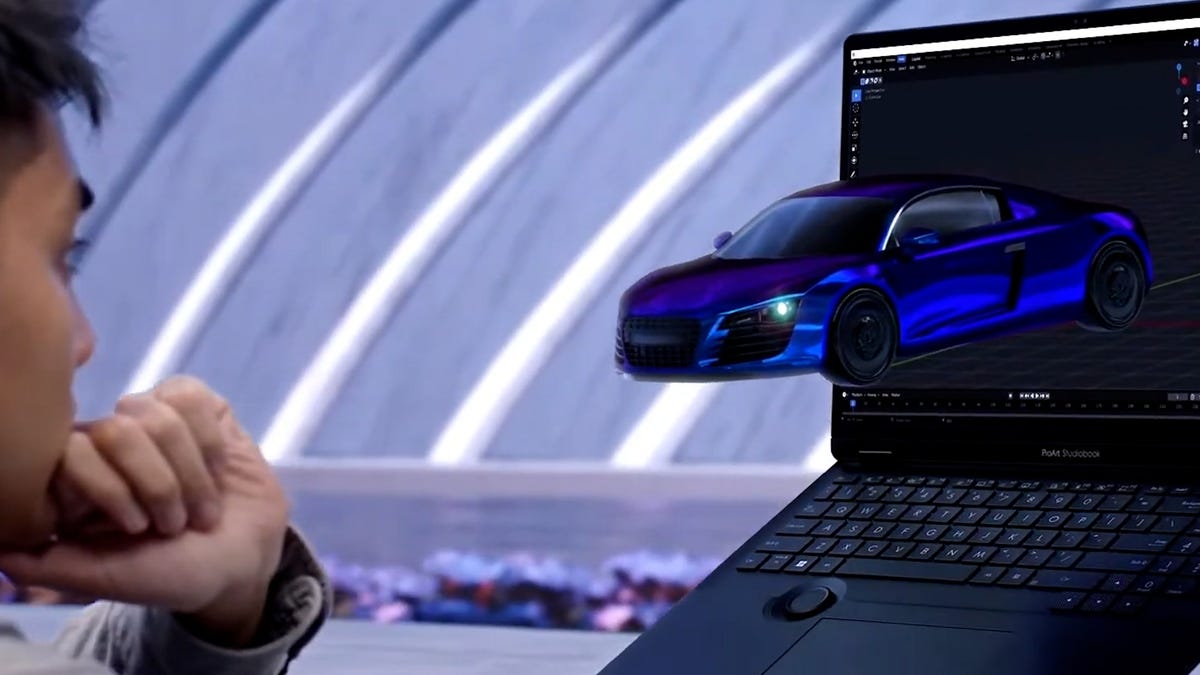
Asus joins Acer for laptops with glasses-free 3D, but hitches its wagon to OLED instead of IPS.
Asus
Images leap off the screen of this Asus laptop — not literally, but close. Its OLED screen produces a 3D experience sans glasses, much like competitor Acer’s similar IPS version. The OLED screen matters because the technology promises a visibly crisper 3D rendering. Asus’s 3D panel, aimed at creatives, uses eye-tracking to produce the 3D experience.
The TV that puts all others to shame
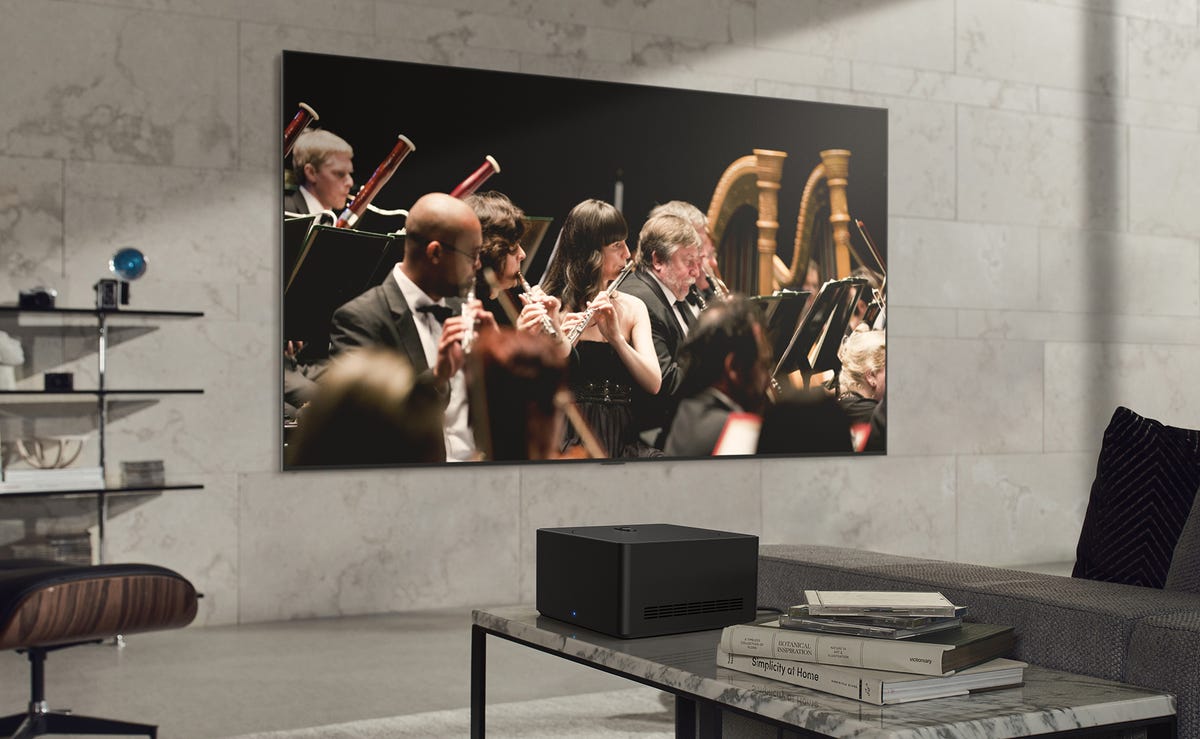
As if a 97-inch OLED TV wasn’t enough, LG went and made it wireless.
LG
It’s the world’s largest OLED TV: LG’s 97-inch model was actually unveiled last year, but in 2023 it’s gone wireless. That means the world’s largest screen with the best picture that technology allows is now free of that ugly jumble of cords. We’ve been covering TVs at CES for years, and even we were surprised — CNET TV guru David Katzmaier was so impressed, he says LG is putting all other TVs to shame with this one.
Read more: Best TVs of CES 2023
$200 and under phones are getting really, really good
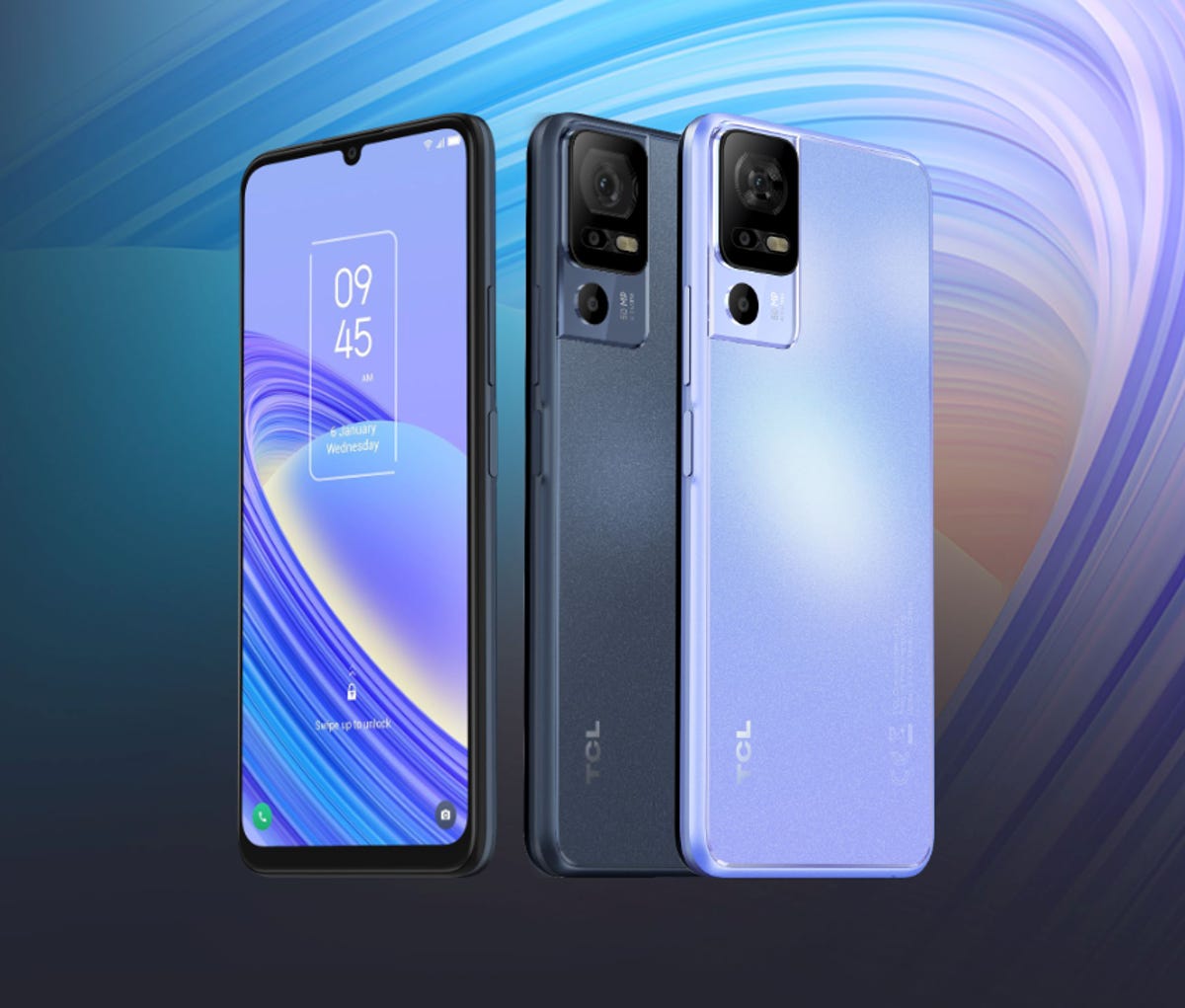
The TCL 40 SE, unveiled at CES 2023.
TCL
Between TCL’s 40 Series phone lineup and Samsung’s Galaxy A14 5G, CES 2023 is shaping up to be a breeding ground for affordable smartphones. Samsung’s $200 newbie is only a modest upgrade to last year’s A13, but it’s even less expensive and features an improved selfie camera. Meanwhile, the TCL lineup starts at $129, launching initially in Europe before coming to the US, and all three variants include a 50-megapixel main camera. All signs point to increasing manufacturer interest in the budget phone market.
Smartwatches want to know if you’re OK
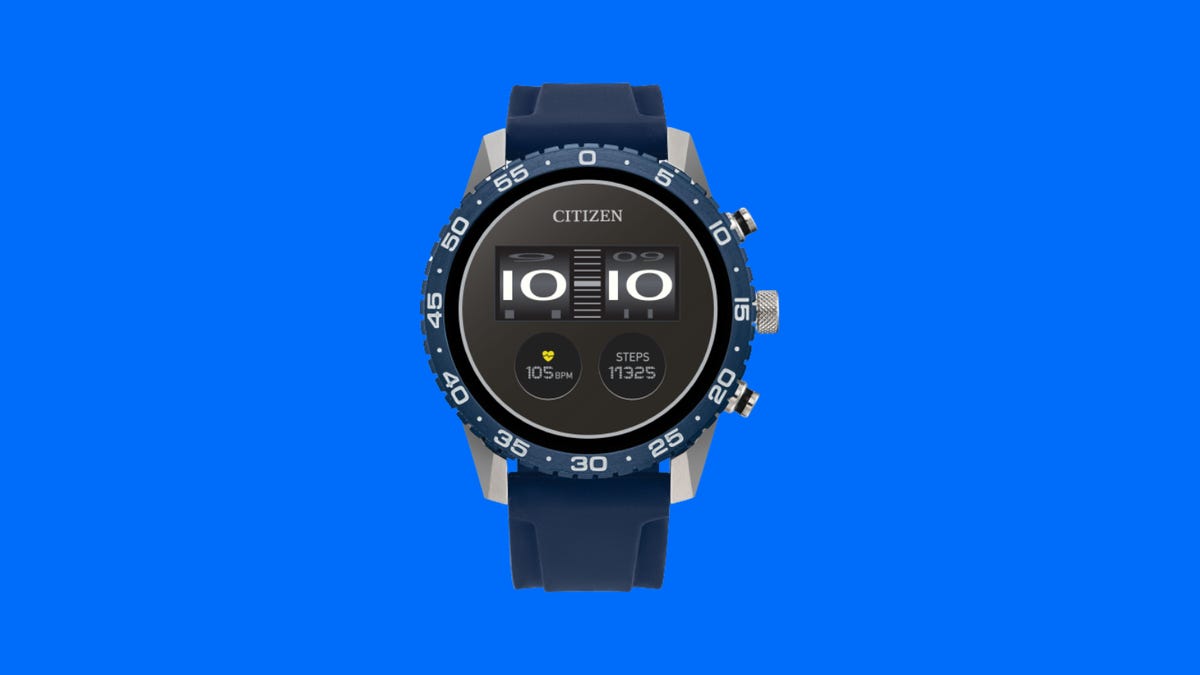
The Citizen CZ Smart watch debuted at CES and will arrive in the US this March.
Citizen
Smartwatches to track heart rate, sleep quality and blood-oxygen levels abound, but Citizen takes it a step further with its CZ Smart watch, which also measures fatigue and alertness levels. It’ll even tell you your chronotype — that is, whether you’re a night owl or an early bird. It’s another sign that smartwatch-makers are focusing more and more on measuring the way sleep and stress impact overall wellbeing.
BMW’s concept car doubles as your buddy
BMW’s i Vision Dee concept car.
BMW
Technology can be so impersonal. BMW’s i Vision Dee hopes to fix that. Using sophisticated AI, this concept car ditches the servant schtick of Siri and Alexa. Instead, it hopes to double as both your car and your friend. The i Vision Dee is an EV sports car with an exterior of 240 E Ink panels. You can use those panels to program a digital face into the car’s grille — because it’s an EV, the ventilation that grilles typically provide isn’t actually needed — or change the car’s colors at the click of a button.
The BMW i Vision Dee is for now just a concept, but some of its features will trickle out to BMW’s actual cars. BMW CEO Oliver Zipse said, for instance, that the AI-powered HUB technology the company put into the i Vision Dee will come to real cars in 2025.
The thinnest gaming laptop in the world
The Alienware x14 is the thinnest 14-inch gaming laptop.
Josh Goldman/CNET
Alienware surprised us with four new laptops ahead of CES, including the Alienware x14, which the company said is the thinnest 14-inch gaming laptop in the world. Featuring a 2,560×1,600-pixel display with a 165Hz refresh rate, it’ll sell from $1,799 when it ships this winter. A bigger version, the Alienware x16, starts at $3,099. These laptops are for people who are willing to sacrifice some power for slicker designs.
Read more: Best Gaming Laptops From CES 2023 So Far
Invisible laptop touchpads
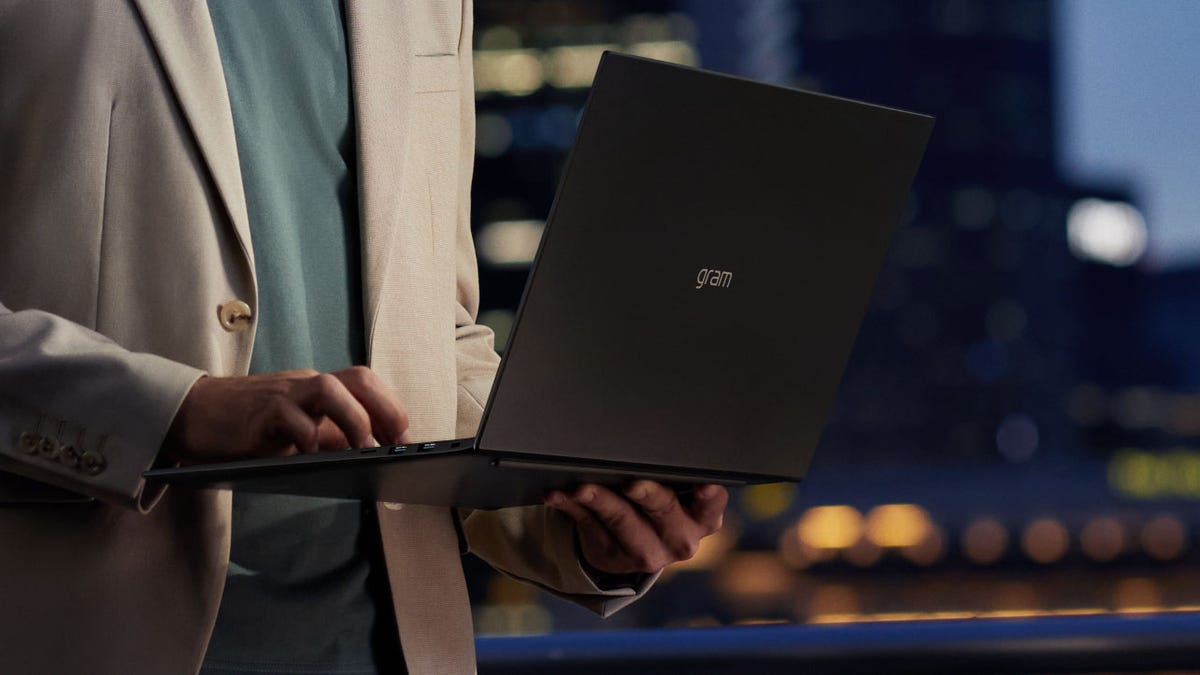
The LG Gram’s hidden trackpad lights up under your fingertips.
LG
LG showed off its new Gram Style laptop, which features a hidden touchpad that presents itself only when you touch the palm rest. The stealthy haptic touchpad lights up under your fingers when touched, showing you where to tap and drag to navigate the screen. It’s a neat detail we didn’t know we wanted.
A giant leap for PC gamers who also use consoles
Dell’s Nyx concept controller.
Josh Goldman/CNET
Dell’s Concept Nyx gaming controller looks at first glance like just another third-party Xbox controller, albeit with some fancy lights. Alas, it’s more than that. The Nyx controller is tricked out with a bunch of hidden inputs, which multiply the functionality of the controller.
The idea seems to be to bridge the gap between a gamepad and a keyboard. PC gamers are able to use hotkey setups to have dozens of inputs, far more than the typical gamepad, which is often limited to the options presented by a d-pad. That means they can use a wider range of attacks in an MMO, for instance, or cycle between six or seven guns in a first-person shooter rather than the two or three that console gamers are often limited to.
Roku has entered the chat
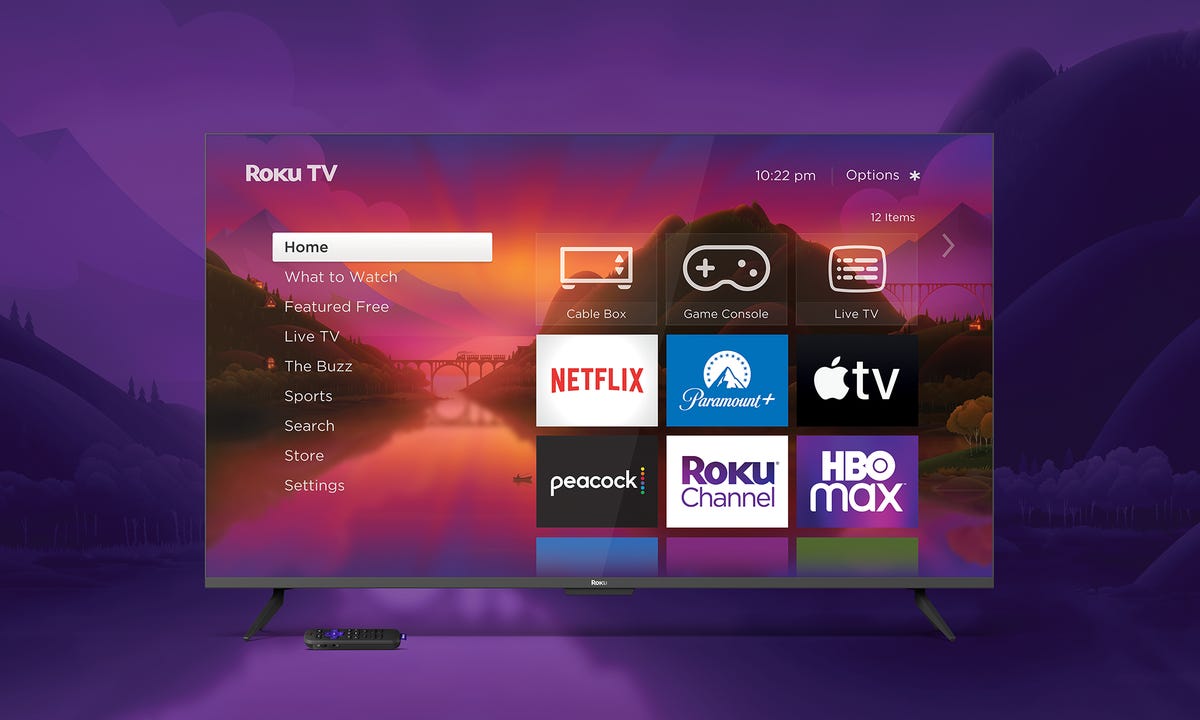
Roku will now make its own TVs.
Roku
Roku announced it’s expanding into TVs, essentially competing with its own partnerships with more established TV-makers such as TCL, Hisense and Sharp. The move has long been rumored and makes a lot of sense for the streaming device-maker. Roku TVs will come with the brand’s Voice Remotes, which include the popular (and ever-useful) “find my remote” feature. Looks like LG and Samsung have some new competition.
Upgrades coming to your laptop’s brains
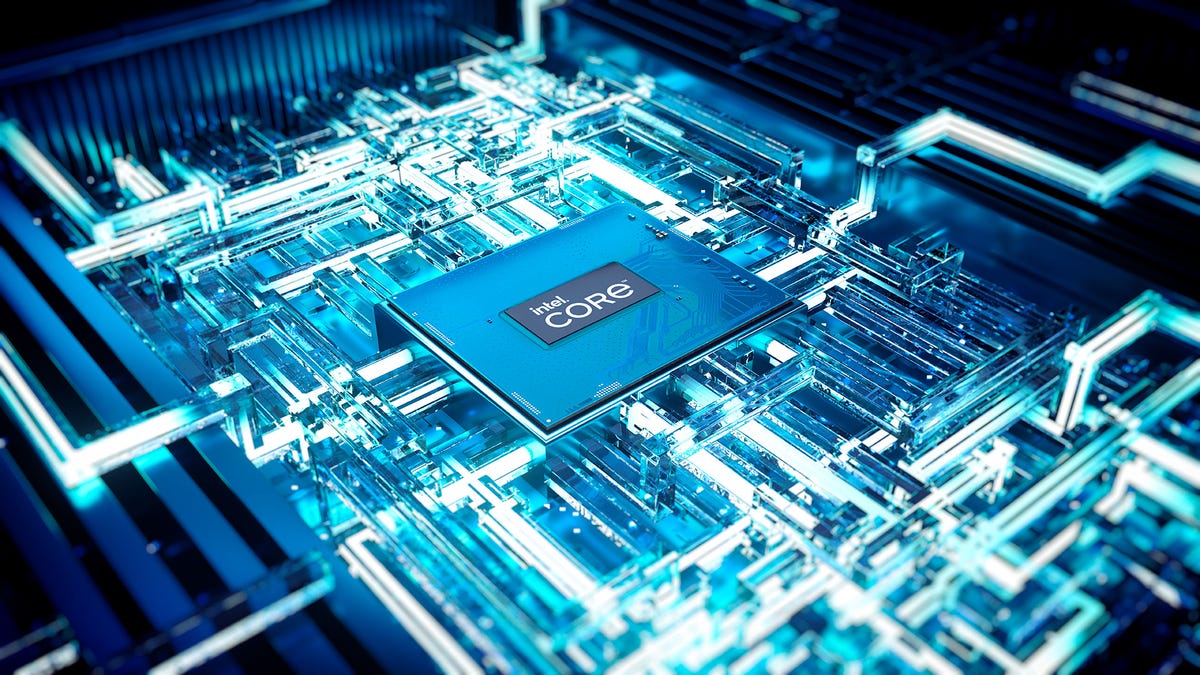
Intel’s 13-gen announcements tell us a lot about upcoming laptops.
Intel
Sleek displays and dazzling screens are nice, but often it’s the tech you don’t see that matters most. Intel unveiled a boatload of new 13th-generation processors, which will power a huge range of products and improve performance on a wide range of laptops.
Less abstract than chip performance are the upgrades they can yield. The new generation of Intel CPUs bring with them Unison, which lets iPhone and Android devices send and receive texts from your PC, as well as Thunderbolt 4, which among other improvements will set as a standard the ability to run two 4K external displays. Expect to see these features in product announcements over the next few days.
Then there was AMD’s press conference. Much of what the company touted was its pro-grade tech, like the AMD chips that were used to build Avatar 2’s visual effects. As far as products you can actually buy, AMD has partnered with HP for the Dragonfly Pro, a laptop designed for freelancers, and Lenovo for new Legion Pro gaming laptops. For PC gamers, AMD’s high-end Ryzen 7 7800X3D and 7950X3D processors are coming this year.
Cloud gaming, now in your car
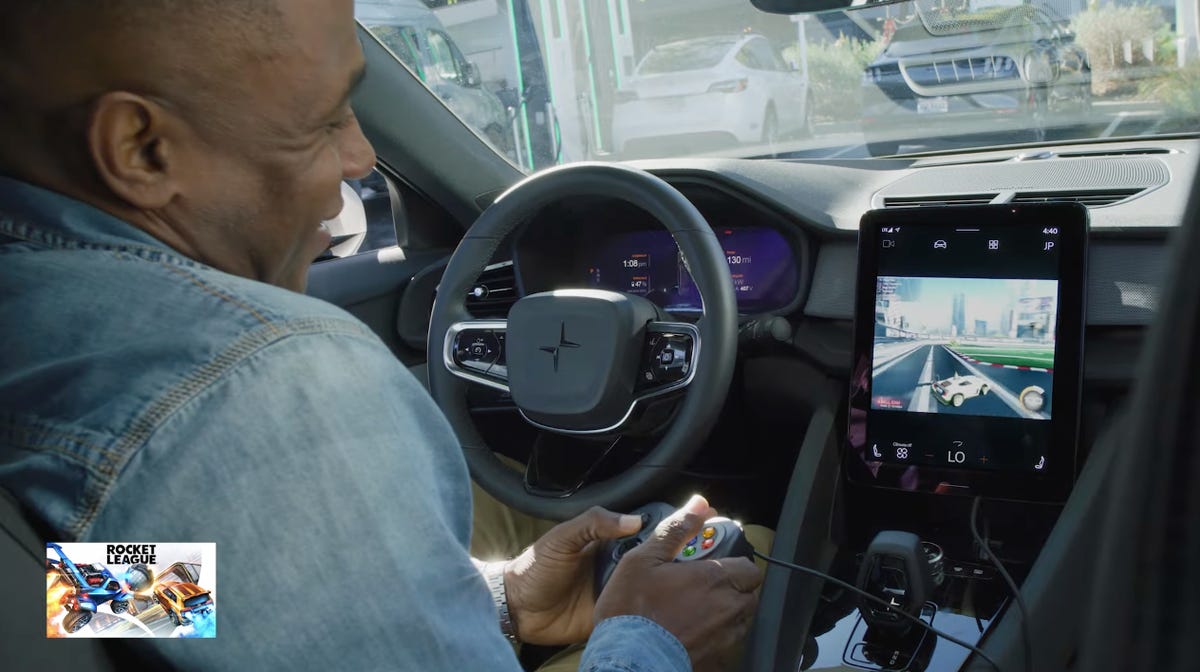
Nvidia brings GeForce Now to your car.
Nvidia
Chief among Nvidia’s announcements are improvements to GeForce Now, its cloud gaming service, which allows you to stream games on laptops, phones and more. In short, the power of Nvidia’s GeForce 4080 GPU is coming to the cloud. If you subscribe to the premium tier of GeForce Now — henceforth known as GeForce Now Ultimate — you can now stream games at 240Hz, utilize ray tracing (which significantly improves how light is rendered in-game) and DLSS 3 (which uses an algorithm to boost frame rate while retaining image quality).
Plus, GeForce Now is coming to… cars. If your car has a screen on its dash, you can play while the car is in park. If there are screens behind the driver or passenger seats, those sitting in the back can game on the go. For starters, Nvidia is partnering with Hyundai, BYB and Polestar.


